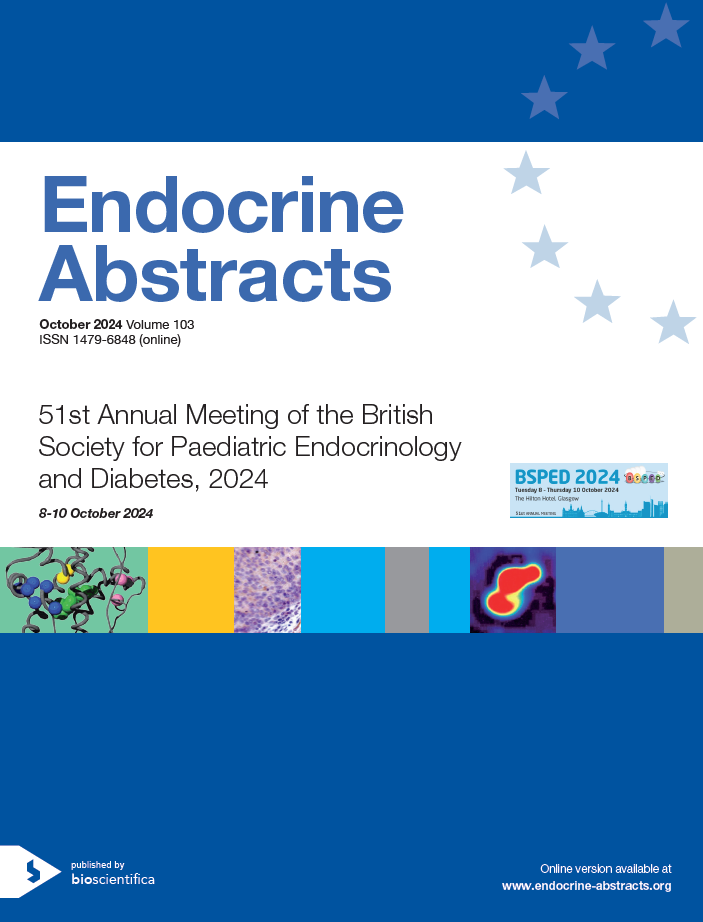
51st Annual Meeting of the British Society for Paediatric Endocrinology and Diabetes
Glasgow,
UK
08 Oct 2024 - 10 Oct 2024

Poster Presentations
Miscellaneous/Other 1
ea0103p44 | Miscellaneous/Other 1 | BSPED2024
Establishing a nurse-led transition clinic for young people with congenital adrenal hyperplasia (CAH): quality improvement project
Thompson Angela , Roberts Alice , Antonio Joanne San. , Clarkson Kerry , Kleczewski Sara , Khairi Ranna El. , Gunn Harriet
ea0103p45 | Miscellaneous/Other 1 | BSPED2024
Evaluating transition in osteogenesis imperfecta in the west of scotland
Wright Holly , McDevitt Helen , Wong Sze Choong. , Talla Maria , Constantinou Panayiotis , Todd Stacey , Fanning Mandy , Mason Avril
ea0103p46 | Miscellaneous/Other 1 | BSPED2024
A novel mutation in the AVPR2 gene causing congenital nephrogenic diabetes insipidus
Edavana Shaju , Ramachandran Sibi , Moolath Sahla , Kottilil Latheesh
ea0103p47 | Miscellaneous/Other 1 | BSPED2024
Hypoketotic hypoglycemia and hypoparathyroidism in medium chain Acyl-CoA dehydrogenase deficiency (MCADD) caused by ACADM mutation-rare
Edavana Shaju , Ramachandran Sibi , Moolath Sahla , Bajpai Anurag , Yadav Vibha
ea0103p48 | Miscellaneous/Other 1 | BSPED2024
Caught before a crisis, but is there more to come?
ea0103p49 | Miscellaneous/Other 1 | BSPED2024
Don’t just correct for the glucose: the electrolyte exclusion effect
Roome Claire , Shine Brian , Guha Nishan , Daskas Nik
ea0103p50 | Miscellaneous/Other 1 | BSPED2024
Safety and efficacy of 18F-DOPA PET/CT scan under oral sedation in children with congenital hyperinsulinism
Gilbert Clare , Morgan Kate , Biassioni Lorenzo , Bomanji Jamshed , Dastamani Antonia
ea0103p51 | Miscellaneous/Other 1 | BSPED2024
Central hypoventilation syndrome with hyperinsulinism in infancy - management challenges
Malhotra Neha , Gilbert Clare , Morgan Kate , Ward Niamh , Dastamani Antonia
ea0103p52 | Miscellaneous/Other 1 | BSPED2024



